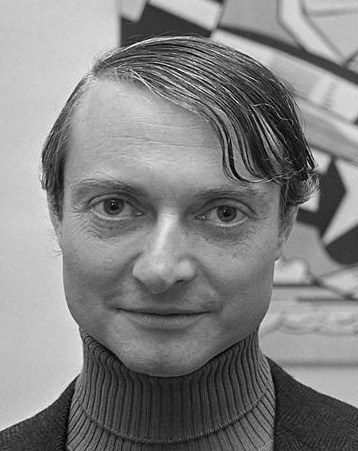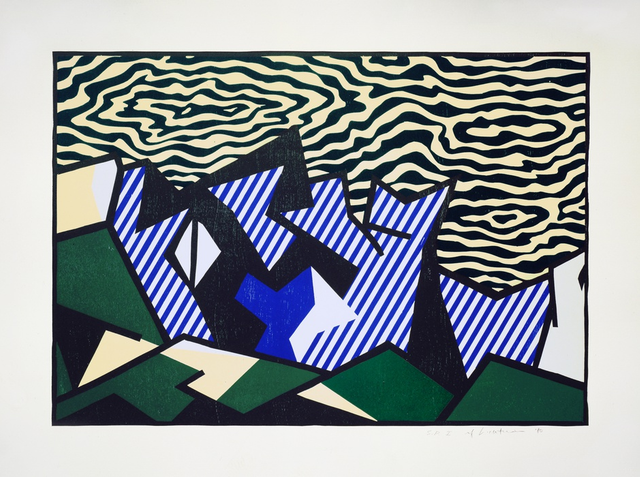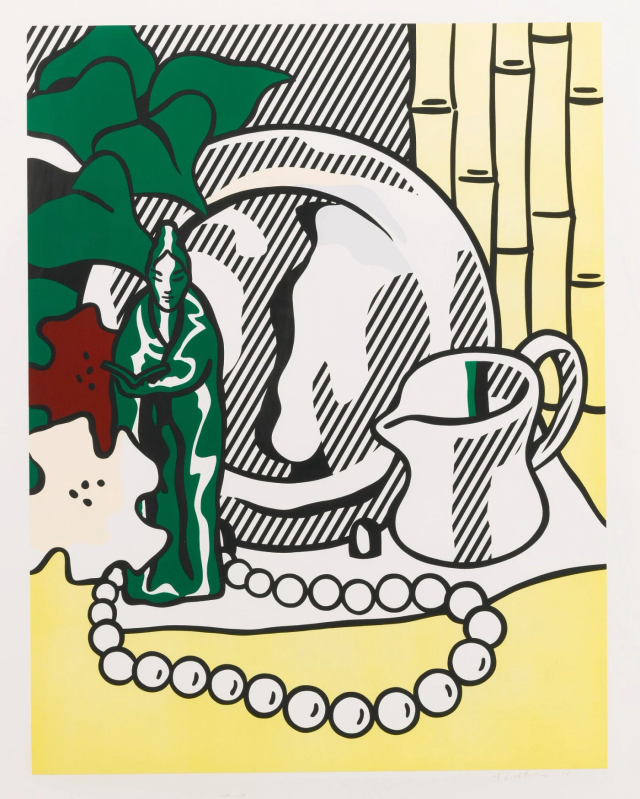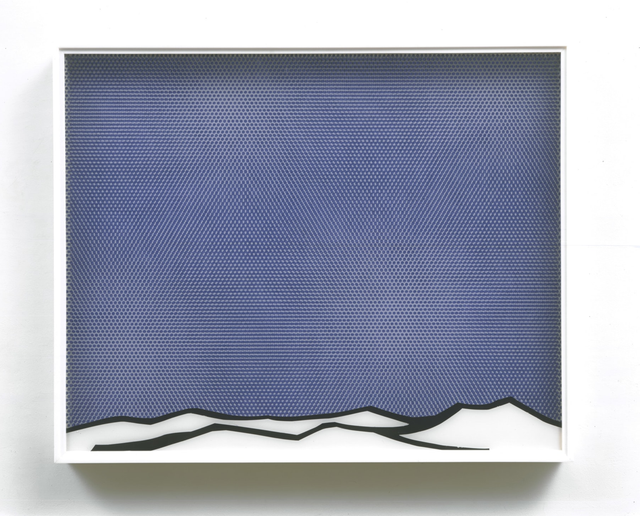
Roy Lichtenstein
Roy Lichtenstein emerged as a prominent American pop artist during the 1960s, alongside luminaries such as Andy Warhol, Jasper Johns, and James Rosenquist. Within this burgeoning art movement, Lichtenstein carved out a distinct niche, drawing inspiration from popular advertising and the stylized imagery found within comic books.
Biography of Roy Lichtenstein
Roy Lichtenstein was born in 1923 in New York City, where his early passion for art and design blossomed during his school years. In 1939, while still in high school, he delved deeper into his artistic pursuits by enrolling in summer classes at the Art Students League of New York under the mentorship of Reginald Marsh.
Following his high school graduation, Lichtenstein embarked on his academic journey at Ohio State University, where he pursued a degree in fine arts. However, his studies were interrupted by a three-year enlistment in the Army during World War II, from 1943 to 1946.
Upon his return to civilian life, Lichtenstein resumed his studies at Ohio State, eventually earning a Master of Fine Arts degree in 1949. He also began his career as an art instructor at the university.
In 1951, Lichtenstein had his inaugural solo exhibition at the Carlebach Gallery in New York City. Subsequently, he moved to upstate New York in 1957, where he resumed teaching and immersed himself in Abstract Expressionism, a style he had adopted relatively late in his artistic development.
Transitioning to teaching at the State University of New York at Oswego in 1958, Lichtenstein began to incorporate elements of popular culture, such as hidden cartoon characters, into his abstract works. His tenure at Rutgers University commenced in 1960, marking a significant period of experimentation and innovation in his artistic practice.
By 1961, Lichtenstein had embraced the Pop Art movement, creating his iconic pop paintings featuring cartoon imagery and techniques inspired by commercial printing. These works, characterized by their vibrant colors and bold compositions, garnered attention and acclaim, culminating in his first solo exhibition at the Leo Castelli Gallery in 1962.
Throughout the 1960s and beyond, Lichtenstein continued to evolve as an artist, exploring new themes and techniques in his Modern Paintings series and venturing into filmmaking with projects like "Three Landscapes" in 1970.
His influence and legacy endure through his extensive body of work, which has been showcased in prominent museums and galleries worldwide. Roy Lichtenstein passed away on September 29, 1997, in New York City, leaving behind a lasting imprint as one of the preeminent artists of the 20th century.
Roy Lichtenstein's Art Style
Roy Lichtenstein's artistic style is notably characterized by his appropriation of comic book panels, which he replicated with slight variations in many of his renowned works. While he moved away from this subject matter after 1965, he occasionally reintroduced comic elements into his later works. The original comic panels that inspired Lichtenstein were created by prominent artists like Jack Kirby and DC Comics illustrators Russ Heath, Tony Abruzzo, Irv Novick, and Jerry Grandenetti.
Utilizing oil and Magna (early acrylic) paint, Lichtenstein's signature pieces, such as "Drowning Girl" (1963), borrowed imagery from DC Comics' Secret Hearts No. 83, particularly a panel drawn by Tony Abruzzo. This painting, characterized by its thick outlines, vibrant colors, and Ben-Day dots, exemplifies his technique.
Another celebrated work, "Whaam!" (1963), depicts a fighter aircraft launching a rocket at an enemy plane amidst a vivid red-and-yellow explosion. This painting, part of his war-themed series from 1962 to 1964, continued his exploration of comic-based themes and is one of his notable large-scale war paintings.
Around 1964, Lichtenstein ventured into sculpture, expanding his artistic repertoire. By 1966, he transitioned from his earlier comic-inspired imagery to his "Modern Paintings" series. This collection of over 60 paintings and accompanying drawings featured his trademark Ben-Day dots and geometric shapes, exploring incongruous yet engaging images derived from architectural structures and Art Deco patterns.
In 1969, Lichtenstein began his "Mirrors" series, followed by his exploration of entablatures starting in 1970. These entablatures comprised two series of paintings in the early 1970s, accompanied by a series of relief prints in 1976. Additionally, he produced "Artist Studios," incorporating elements from his previous works.
During a trip to Los Angeles in 1978, Lichtenstein was inspired by Robert Rifkind's collection of German Expressionist prints, leading him to incorporate stylistic elements from Expressionist paintings into his works. His late 1970s pieces, such as "Pow Wow," embraced a more surrealistic approach, particularly evident in his Surrealist-Pop series from 1979 to 1981, which drew inspiration from Native American themes.
Lichtenstein's still life works, spanning from the early 1970s to the early 1980s, encompassed various motifs, including fruit, flowers, and vases. Additionally, his "Landscapes in the Chinese Style" series, influenced by Edgar Degas' monochromatic prints, featured simulated Benday dots and vivid coloration, displaying a departure from traditional landscape representations.
Years:
Born in 1923
Country:
United States of America, New York City
Gallery:
Van de Weghe
Cristea Roberts Gallery
ACQUAVELLA
Gemini G.E.L.
Bernard Jacobson Gallery
Vedovi Gallery
Gagosian
Peter Freeman, Inc.Social





